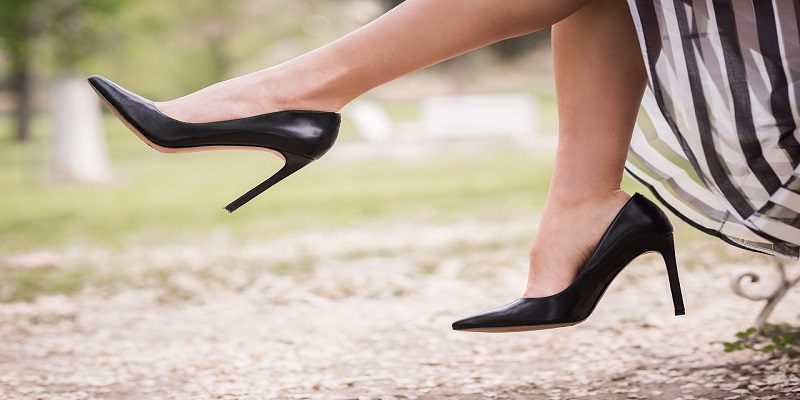Choosing the perfect pair of shoes involves more than just picking a style that suits your taste. Proper shoe sizing is a crucial factor in ensuring comfort and preventing common foot problems. In this comprehensive guide, we will delve into the intricacies of shoe sizing, explore the importance of finding the right fit, and offer tips to avoid common foot issues associated with ill-fitting footwear
The Significance of Proper Shoe Sizing
Wearing shoes that fit well is not only a matter of comfort but also plays a pivotal role in maintaining overall foot health. Ill-fitting shoes can lead to a myriad of problems, including blisters, calluses, corns, ingrown toenails, and even more serious issues like bunions and hammertoes. Additionally, wearing shoes that are too tight or too loose can contribute to pain in the feet, ankles, knees, and even the lower back.
Understanding Shoe Sizing
Shoe sizing may seem straightforward, but it’s more than just the numerical size printed on the shoebox. Different brands and styles may have variations in sizing, making it essential to understand the nuances of shoe sizing systems.
Measure Your Feet Regularly
Feet can change size over time due to factors like weight gain, pregnancy, or aging. To ensure accurate sizing, measure your feet regularly, preferably in the evening when they tend to be slightly larger.
Consider Width as Well as Length
Shoe width is just as crucial as length. Shoes come in different width options, typically ranging from narrow (N) to extra wide (WW). Choosing the right width can prevent discomfort and foot problems.
Understand Sizing Charts
Shoe sizing charts are available online, and they can help you convert your foot measurements to the appropriate shoe size for different brands and regions. Be aware of variations in sizing between countries, such as the differences between US, UK, and European sizing.
The Science of Shoe Sizing
Behind the seemingly simple concept of shoe sizing lies a fascinating blend of art and science. Manufacturers employ various sizing systems based on factors such as foot length, width, and even arch height. While numerical sizing is prevalent, the width of the foot, denoted by letters like N (narrow) to WW (extra wide), adds another layer of complexity. Understanding the dynamic relationship between foot anatomy and shoe design is key to finding the perfect fit.
Foot Anatomy and Biomechanics
Every foot is unique, with variations in arch height, toe length, and width. The biomechanics of walking involve complex movements, and shoes must accommodate these nuances. Arch support, for instance, is critical to distributing weight evenly and preventing issues like plantar fasciitis.
Materials and Shoe Construction
The materials used in shoe construction play a significant role in how they fit. Leather, for example, tends to stretch over time, while synthetic materials may retain their shape more rigidly. Understanding the properties of these materials can guide your choice based on your foot’s needs and the intended use of the shoes.
Brands and Sizing Consistency
Different brands often have their unique sizing quirks. One brand’s size 9 may not precisely match another’s. Hence, relying on a brand’s sizing chart and, whenever possible, trying on shoes before purchase becomes crucial for consistency.
Practical Tips for Finding the Perfect Fit
Technology and Shoe Sizing Apps
Embrace technology to streamline the sizing process. Some brands offer apps that use augmented reality or precise measuring tools to recommend the ideal size based on your foot’s dimensions.
Know Your Feet
Understanding your foot shape, arch height, and width can significantly narrow down your search. If you have specific orthopedic needs, consult with a podiatrist for personalized recommendations.
Consider the Activity
Different activities demand different features in shoes. Running shoes, for instance, require additional cushioning and support, while dress shoes may prioritize style over extensive arch support. Tailoring your choice to the intended use enhances both comfort and functionality.
Be Mindful of Socks
The type of socks you wear can impact the fit of your shoes. When trying on shoes, wear the socks you plan to use with them to ensure an accurate assessment of the fit.
Try Before You Buy
Always try shoes on before purchasing, and ensure there is enough space (about a thumb’s width) between the longest toe and the end of the shoe. Walk around the store to assess comfort and fit.
Shop in the Afternoon
Feet tend to swell throughout the day, so shopping for shoes in the afternoon or evening when your feet are at their largest can help you find a more accurate fit.
Consider the Type of Shoe
Different types of shoes may have varying fits. Athletic shoes, formal shoes, and casual shoes may have different sizing requirements, so consider the specific purpose of the footwear.
Check Both Feet
It’s not uncommon for one foot to be slightly larger than the other. Always fit your shoes to the larger foot to avoid discomfort.
Common Foot Problems and How to Avoid Them
Blisters
Blisters are often caused by friction between your foot and the shoe. To prevent blisters, choose shoes that fit well, and consider using moisture-wicking socks to reduce friction.
Corns and Calluses
These develop from repeated pressure or friction. Ensure your shoes have enough room for your toes and don’t rub against any part of your foot excessively.
Ingrown Toenails
Tight shoes or shoes with narrow toe boxes can lead to ingrown toenails. Opt for shoes with a wider toe box to give your toes more room and reduce the risk of ingrown nails.
Bunions
Bunions are often hereditary, but tight or narrow shoes can exacerbate the condition. Choose shoes with a wide toe box and adequate arch support to alleviate pressure on the big toe joint.
Hammertoes
Hammertoes can result from shoes that force your toes into an unnatural position. Select shoes with a roomy toe box and avoid high heels that can cramp the toes.
Regular Foot Maintenance
Practicing good foot hygiene, keeping nails trimmed, and moisturizing the skin can prevent issues like ingrown toenails and calluses, promoting overall foot health.
Insoles and Orthotics
Custom insoles or orthotics can transform a pair of shoes into a personalized, foot-friendly haven. They provide additional support and can alleviate issues like arch pain or plantar fasciitis.
Rotate Your Shoes
Avoid wearing the same pair of shoes every day. Alternating between different styles gives your feet a break and reduces the risk of developing foot problems associated with repetitive pressure points.
Conclusion
In the quest for the perfect fit, patience and mindfulness are your allies. Embrace the journey of self-discovery as you learn about your unique foot anatomy and preferences. The right pair of shoes isn’t just a fashion statement; it’s an investment in your health and well-being. By combining knowledge of sizing systems, practical tips, and a proactive approach to foot care, you’ll not only avoid common foot problems but also stride confidently towards a healthier, more comfortable future. Your feet, after all, are your steadfast companions on life’s journey — let’s make sure they enjoy the ride.

































